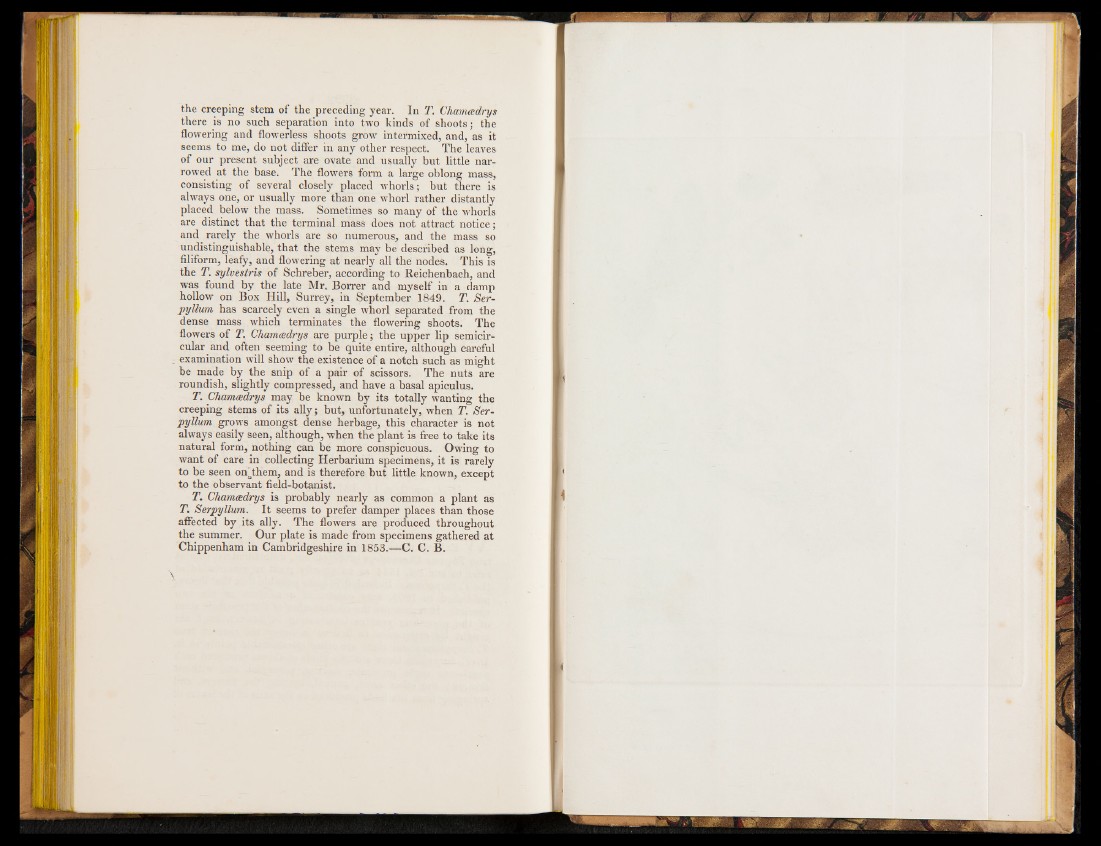
the creeping stem of the preceding year. In T. Chamcedrys
there is no such separation into two kinds of shoots; the
flowering and flowerless shoots grow' intermixed, and, as it
seems to me, do not differ in any other respect. The leaves
of our present subject are ovate and usually but little narrowed
at the base. The flowers form a large oblong mass,
consisting of several closely placed whorls; but there is
always one, or usually more than one whorl rather distantly
placed below the mass. Sometimes so many of the whorls
are distinct that the terminal mass does not attract notice;
and rarely the whorls are so numerous, and the mass so
undistinguishable, that the stems may be described as long,
filiform, leafy, and flowering at nearly all the nodes. This is
the T. sylvestris of Schreber, according to Reichenbach, and
was found by the late Mr. Borrer and myself in a damp
hollow on Box Hill, Surrey, in September 1849. T. Ser-
pyllum has scarcely even a single W'horl separated from the
dense mass which terminates the flowering shoots. The
flowers of T. Chamcedrys are purple; the upper lip semicircular
and often seeming to be quite entire, although careful
examination will show the existence of a notch such as might
be made by the snip of a pair of scissors. The nuts are
roundish, slightly compressed, and have a basal apiculus.
T. Chamcedrys may be known by its totally wanting the
creeping stems of its ally; but, unfortunately, when T. Ser-
pyllum grow's amongst dense herbage, this character is not
always easily seen, although, when the plant is free to take its
natural form, nothing can be more conspicuous. Owing to
want of care in collecting Herbarium specimens, it is rarely
to be seen on'them, and is therefore but little known, except
to the observant field-botanist.
T. Chamcedrys is probably nearly as common a plant as
T. Serpyllum. It seems to prefer damper places than those
affected by its ally. The flowers are produced throughout
the summer. Our plate is made from specimens gathered at
Chippenham in Cambridgeshire in 1853.—C. C. B.
1